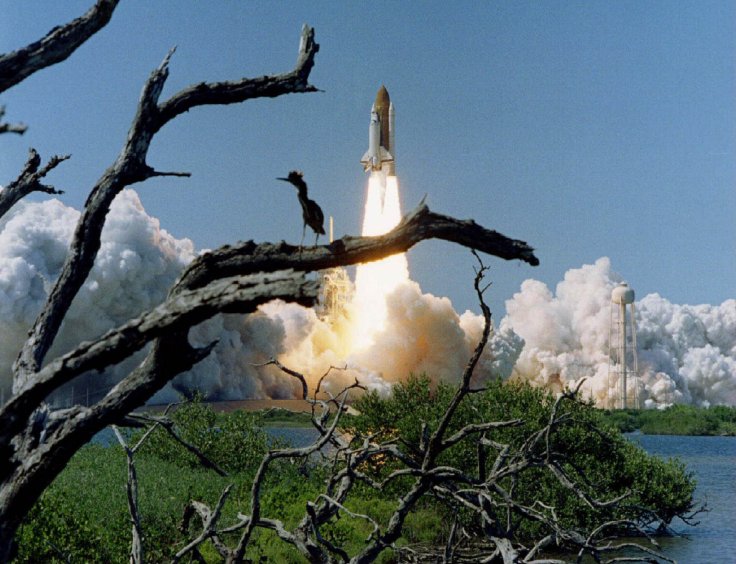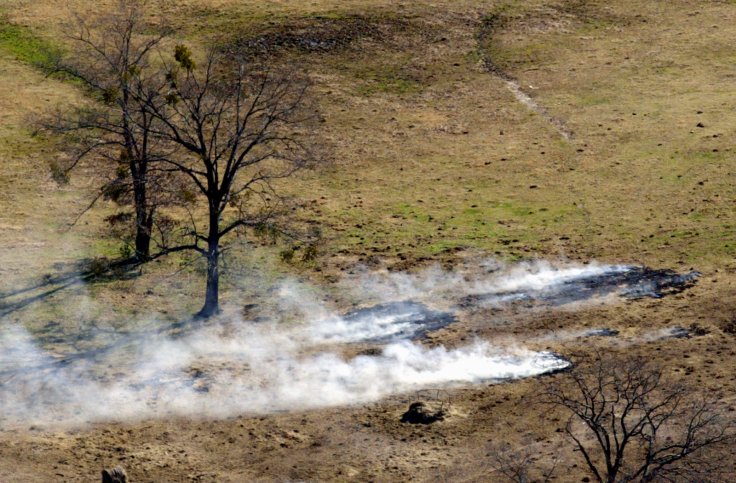
On this day 15 years ago, the launch director for Space Shuttle Columbia, Mike Leinbach watched helplessly as the spacecraft dropped from the orbit. He and his other colleagues witnessed the heart-wrenching event from the Launch Control Center on February 1, 2003.
It was supposed to be a cheerful day for NASA, as Columbia Space Shuttle and seven astronauts aboard it were coming back home. Leinbach, being the launch director, had given the final "go" to the STS-107 mission so that it could blast off 16 days prior to the fateful date. On February 1, 2003, he was headed towards the runway of Kennedy Space Center to greet the seven astronauts along with top executives of NASA and the family members of the Columbia crew, reported Florida Today, as Leinbach recalled the memories of that day.
They all sensed that something was not right. A pair of sonic booms usually brings the indication of any crew's arrival. However, on that day the booms didn't occur before the pre-planned landing, which was scheduled to happen at 9:15 a.m.
The mass heard the Mission Control trying to contact with the commander of Columbia Space Shuttle Rick Husband on the loudspeaker. However, no reply came from that side. After that, at 9:15 a.m. the midfield clock came down to zero and then again started ticking up.
"Columbia should have been right in front of us, and it wasn't there. The fact that it wasn't in front of us meant it was a bad day. It was not going to have a good outcome," recalled Leinbach.
Rick Husband, payload commander Michael Anderson, the pilot of the shuttle Willie McCool, payload specialist of the mission Ilan Ramon and mission specialists Kalpana Chawla, Laurel Clark and David Brown never made it back home, as Space Shuttle Columbia was torn apart, while re-entering the earth, over Louisiana and East Texas.
This disaster made NASA stop the program of launching astronauts in their own spacecraft in 2011. The space agency has still not been able to restore that capability yet, as most of the crewed missions are now conducted aboard Russian space shuttles.
Now, Leinbach has co-written a book titled "Bringing Columbia Home: The Untold Story of a Lost Space Shuttle and Her Crew," along with author Jonathon Ward.
"It's the final story of Columbia, and it's never been told in this level of detail. It was really meant to honor the 25,000 people that helped us find the debris and the crew over those three months out there in Texas," said Leinbach.

Leinbach has written how the despairing employees of NASA, along with FEMA, the U.S. Forest Service, the FBI, and, several local, state and federal agencies searched the area for the debris of the spacecraft and the lost astronauts.
While the two missing sonic booms that morning made all the difference, entire East Texas experienced a terrifying number of booms shortly after. "Eighty-four thousand pieces, 84,000 sonic booms. Some of them very loud, some of them so quiet you couldn't hear. But every one of them broke the sound barrier," said Leinbach.
While the rumbles of Columbia hit the ground in Texas, Leinbach, along with others in Florida waited for her to come home. "She never came home; we didn't know where it was," Leinbach recalled.
"Bringing Columbia Home" talks about NASA's effort of reconstructing the orbiter shuttle and how the space agency finally treated Columbia in a different way than the 1986 Challenger accident. "Challenger, we buried it and moved on. Columbia, we're studying the debris for the effects of hypersonic re-entry on materials," informed Leinbach.
There is a loan program in NASA, where researchers can borrow the rescued parts of Columbia and study them. These parts are preserved in the Vehicle Assembly Building. According to Leinbach, this program has earned doctorate degrees to at least three researchers.
Also Read: SpaceX failed mysterious Zuma mission, what does company president say now?
Recently NASA honored fallen astronauts during the ceremony of its annual Day of Remembrance. It took place at the KSC Visitor Complex. Right after a day of the ceremony, Leinbach took part in a "lessons learned" program at the spaceport. Among other significant lessons, something that experts should remember is that every space-flight should be treated like it's their first flight. "Listen to what the hardware is telling you. Don't accept seemingly minor problems because they haven't yet caused major problems. Don't accept waivers if systems fail to meet safety requirements," he added.
Every month Leinbach leads tours in the KSC Visitor Complex, which pass through "Forever Remembered" tribute of NASA to the Challenger and Columbia astronauts. He also triggers discussions about these disastrous accidents. "You never get used to the fact that we lost them," he said.









